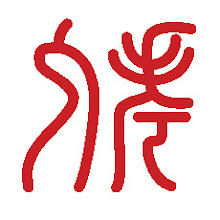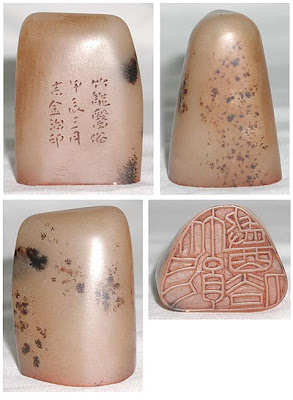
A sweet little seal with much cultural resonance: peaches on a tree. The peach is native to China and is involved in many stories, including that of Yu Huang (the Jade Emperor) and his mother Xi Wangmu (Queen Mother of the West) who conferred longevity on the gods by feeding them the peaches of immortality, whose tree fruited only once every 1000 years.
Inscription 1: 千年桃實大如斗仙人摘之㕥, qian nian tao shi da ru dou xian ren zhai zhi [ ],
A thousand year peach, big as a dipper. The immortal picks and eats.
Inscription 2: [ ] 酒一食能得千年壽 [ ] 頰(?)常在十八九, [ ] jiu yi shi neng de qian nian shou [ ] jia chang zai shi ba jiu, Drink this wine (elixir) once to gain a thousand years of longevity, rosy cheeked always, like an 18 or 19 (year old).
Impression: 月+?, 龍, [ ] long, [ ] dragon. The right half of the first character is very elusive to me.
Signature: 又 耕 占, You Geng Zhan


















